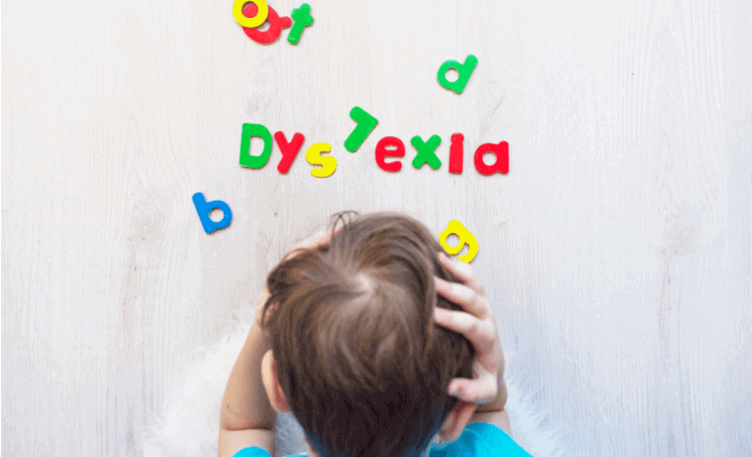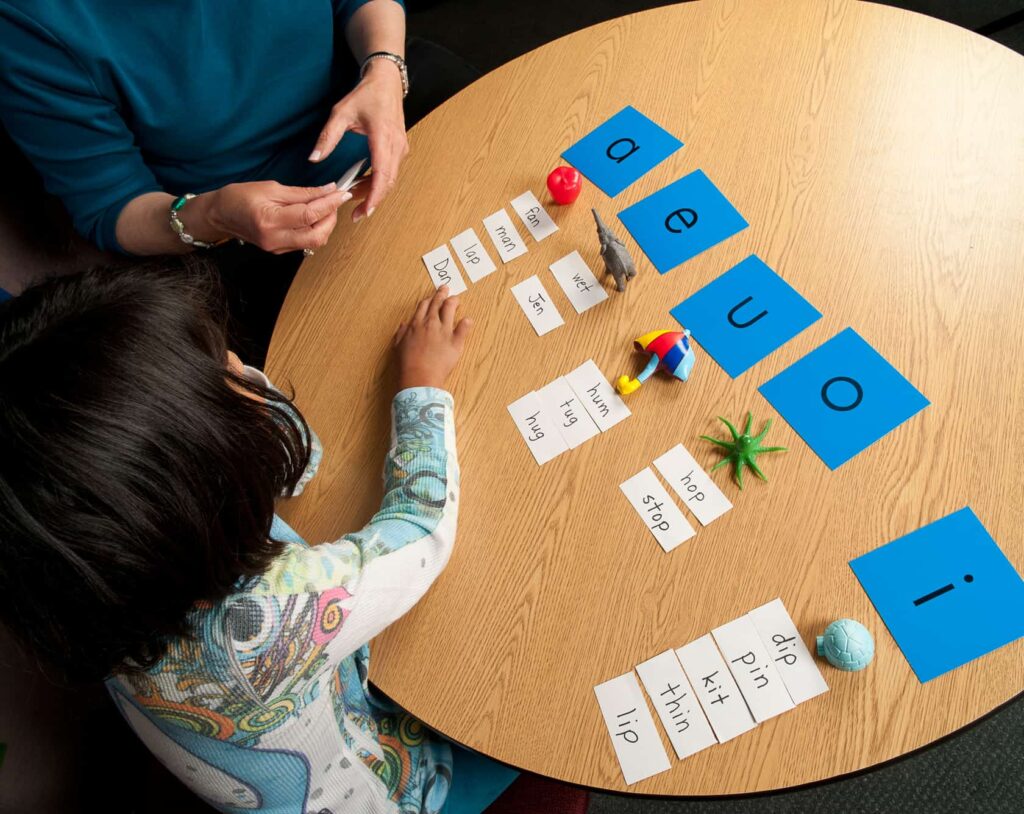Some students struggle more in school and take a longer time to read. Facing trouble processing words which can also make it hard to spell, write, and speak clearly. This problem is called Dyslexia.
What is Dyslexia?

Dyslexia is a type of specific learning difficulty (SLD) in which the person has difficulties with language that affect the ability to read, spell, write, and speak. The term dyslexia is too narrow to describe the learning difficulties. This is because the learning difficulties are usually broader than just reading difficulties; most children with SLD also have difficulty with spelling.
However, special and appropriate teaching methods and adequate emotional support can surely help a dyslexic child cope successfully through school and later as an adult. Thus, early assessment of dyslexia in a child is greatly beneficial.
A study shows that about 10% to 16% of students in Saudi Arabia have some symptoms of dyslexia, such as slow reading, trouble spelling, or mixing up words. And the incidence of males is 4 times higher than that of females. Adults can have this learning disorder, as well. Some people are diagnosed early in life. Others don’t realize they have dyslexia until they get older.
Causes of Dyslexia
The condition stems from differences in parts of the brain that process language. Imaging scans in people with dyslexia show that areas of the brain that should be active when a person reads don’t work properly.

When children learn to read, they first figure out what sound each letter makes. For example, “B” makes a “buh” sound. “M” makes an “em” sound. Then, they learn how to put those sounds in order to form words (“C-A-T” spells “cat”). Finally, they have to figure out what words mean (“Cat” is a furry animal that meows).
For kids who have dyslexia, the brain has a hard time connecting letters to the sounds they make and then blending those sounds into words. So to someone with dyslexia, the word “cat” might read as “tac.” Because of these mix-ups, reading can be a slow and difficult process.
After all, the exact causes of dyslexia remain unknown, but theories include:
- There may be problems with phonological awareness (distinguishing the meaning of contrasting speech sounds).
- A person with poor phonological awareness has trouble with their short-term memory for spoken words, which means they tend to forget instructions or word lists.
- There may be problems with the visual, auditory, linguistic or neurological processes that are involved with recognising the written word.
- Reading difficulties tend to run in families, which suggests a genetic link.
Diagnosis
Dyslexia can be hard to diagnose unless the problem is severe. Seek professional advice from a specialist educational psychologist if you think you or your child may have dyslexia. The evaluation may include testing a range of factors including:
- cognitive (thinking) skills.
- memory.
- vocabulary.
- literacy skills.
- intellectual ability.
- information processing.
- psycholinguistic processing.
- An evaluation by a speech pathologist may also assist.
Treatment For dyslexia

There is no cure for dyslexia, but the person can benefit from specialised support, which could include:
- one-to-one tutoring from a specialist educator.
- a phonics-based reading program that teaches the link between spoken and written sounds.
- a multi-sensory approach to learning, which means using as many different senses as possible such as seeing, listening, doing and speaking.
- arrangements with the child’s school – for example, for them to take oral instead of written tests.
- learning via audio or video recordings.
Where to get help
- Your doctor.
- Specialist educational psychologist.
- Your child’s school.
- A speech pathologist.
It is important to remember that this condition is not an illness. It also does not impact or reflect on the dyslexic person’s intelligence or willingness to learn which may be normal, or even above average.
Kids with dyslexia often have normal vision and are just as smart as their peers and, but they have trouble connecting the letters they see to the sounds those letters make.







